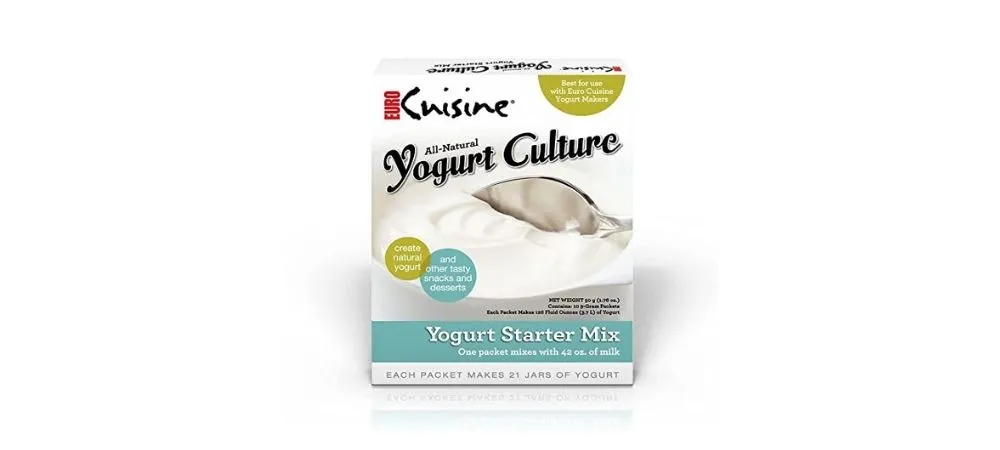Yogurt is cherished across the world for its delectable taste and numerous health benefits. But what makes yogurt – a healthy treat? Well, the presence of live cultures makes it a nutritious choice to consider for your wholesome breakfast and healthy snacks. If you are wondering, what are live cultures and how they enhance the nutritional value of your yogurt, this blog post is for you!
Live Active Cultures
Live & Active cultures, also known as probiotics are responsible for the fermentation of milk to turn into yogurt. These are the healthy bacterias that keep up your gut health and improve your immune system among the various health benefits.
Live active cultures are found in yogurts, including Lactobacillus acidophilus, L. Reuteri, and L. Casei, as well as Bifidobacterium Bifidum or Bifidus for the second fermentation that transforms milk into yogurt.
How do Live Active Cultures Work?
The method by which yogurt is made is as follows:
The milk is heated to about 85 degrees Celsius, then cooled down to a temperature of approximately 45 degrees Celsius. You should add the live culture only after cooling down the milk to the culturing temperature.
Fermented the milk for about 12 hours at 45 degrees (Celsius) to incubate bacteria in it. In the process of fermentation, these active culture bacterias multiply themselves to cuddle the milk into yogurt. All they need is the required temperature to outgrow.
Chill it for 6 hours to get a thicker consistency. Your yogurt with Live Active Cultures is ready to boost your health.
Pro Tip: Adding prebiotics helps in achieving the thick consistency. It feeds the bacteria and helps them to work better for your health.
If you are a frozen yogurt lover, you should know:
The National Yogurt Association (NYA) launched the Live & Active Culture seal program to define live and active cultures criteria. As a result, all frozen yogurt on the market must contain at least 100 million active living cultures per gram when manufactured.
If a company can produce yogurt according to the established standards, it must get the N.Y.A.’s seal of approval.
Note: If you heat the yogurt after fermentation, all the live bacterias such as Bifidus, Streptococcus thermophiles, Lactobacillus and Lactobacillus bulgaricus gets destroyed.
What Are The Potential Benefits of Active Cultures?
There are many different types of probiotics, and while some seem to enhance immune function, others appear to help with the body’s functions. In a research published in the “European Journal of Nutrition” in December 2004, yogurt with added L. casei helped students’ immune function when stressed about exams.
A study published in the “British Journal of Nutrition” in March 2012, compared Bifidobacterium animalis subsp. lactis supplements to L. casei supplements and discovered that both improved immune function relative to placebo.
Probiotics may be helpful in the treatment of diarrhea and irritable bowel syndrome by preventing colds and yeast infections as well as promoting lactobacilli growth.
Some of the potential health benefits of live cultures in Yogurt are:
Immune System:
Yogurt’s live active cultures are particularly beneficial to the immune system and aid in its strengthening. Yogurt bacteria can regulate the body’s immune system and protect it from external germs that might be harmful.
As a result, eating yogurt with live active cultures may help your body strengthen internally by creating a solid wall of protection.
Cure for Antibiotics:
Any treatment will include antibiotics, which are potent enough to harm and destroy the bacteria already present in the body, even those required for the proper functioning of the internal mechanism.
It lowers the immune system’s ability to combat harmful external stimuli, limiting its power. Yogurt with live active cultures aids restores the body more quickly by reversing the process.
It’s also been shown to reduce the effects of antibiotics, including stomach upset, intestinal irritation, and other problems.
Suitable for Lactose Intolerance:
Millions of people have lactose intolerance, which means they cannot consume any dairy products. Dairy products might cause digestive problems, infections, severe stomach cramps, and discomfort.
For even those with severe lactose intolerance, consuming live-activated cultures-containing yogurt is not difficult. The bacteria in the yogurt help to break down the lactose so that the body can easily digest it, avoiding any adverse side effects associated with dairy consumption.
Live active cultures in yogurt promote the recovery of the body more rapidly. It can also help with antibiotic-induced side effects, such as gas, intestinal damage, etc.
Fights Diarrhea:
While a more robust culture is enough to battle severe diarrhea, yogurt’s live active cultures can help. These microorganisms are prone to prevent diarrheal disease caused by antibiotics or other external factors.
Certain probiotics are beneficial in treating irritable bowel syndrome (IBS). Probiotics present in yogurt generally uses to relieve traveller’s diarrhea caused by eating contaminated or stale food.
Calcium Component:
Calcium is an essential for a healthy body and strong bones. Yogurt contains significant amounts of minerals like calcium, which aid in maintaining bone strength. The ones that have lived active culture are more impactful.
Amount of Live Cultures One Should Look For
Always choose yogurt that comes with a specified number of live active cultures in it. While no minimum beneficial level is set, preliminary evidence suggests that taking at least 1 billion colony-forming units of probiotics each day may benefit your health.
According to a July 2011 article published in “Consumer Reports,” many yogurts contain 90 billion to 500 billion colony forming units in each serving, can deliver several benefits to your health.
What is the Difference Between Live Active Cultures and Heat Treated Yogurt?
The most important thing to keep in mind when purchasing processed yogurt is whether or not it contains live active cultures. If you heat the yogurt after culturing, all the live probiotic bacteria will die. Such yogurt labelled as ‘heat treated’
For the yogurt packages with a label ‘live and active cultures’, it should atleast be 100 million cultures per gram of yogurt. To confirm, if the yogurt you are buying contains the live culture or not, check for the labels such as ‘contains active cultures’ or ‘living yogurt cultures’.
Other Considerations When Choosing Yogurt
For choosing the healthiest yogurts, look for the one with live active cultures. Choose the yogurts that are low in fat and added sugar. Greek yogurt or Nonfat or low-fat plain yogurt are two worthy nutritious choices since they have low amount of fat, natural sugars and saturated fat.
According to the American Council on Exercise, if you want to add flavours, the sugar content in yogurt goes up, so you’re better off making your fruit syrup rather than purchasing flavoured yogurts.
Artificially sweetened flavoured yogurts are not a good choice as they contain high levels of sugar. However, these sweeteners introduce chemicals that can cause issues such as headaches for some people.
Conclusion
Live Culture Yogurt is a healthy consideration which comes with several health benefits. Heat treated yogurt may satiate your tastebuds but do not provide much health benefits. It is due to the fact that the heating the cultured yogurt turns the healthy bacteria dormant.










